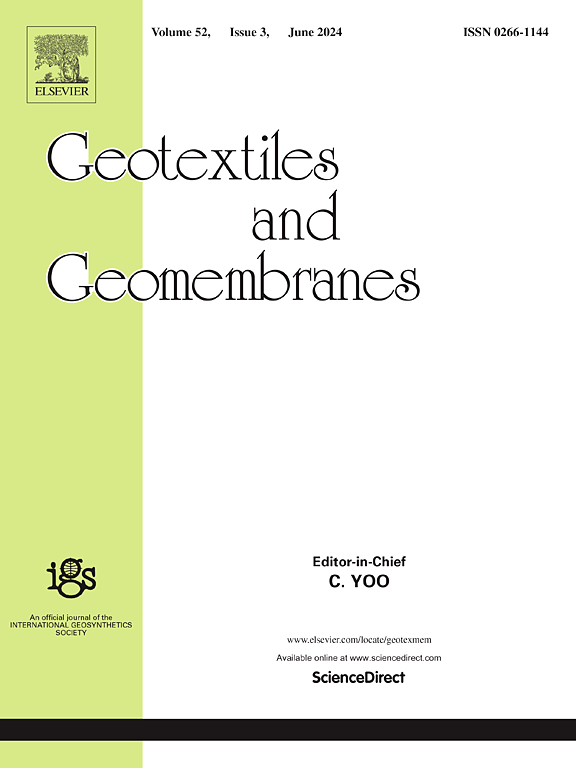Evaluation of arched EPS block and geocell inclusions in trench backfill for protection of buried flexible pipes
Abstract
This paper presents an experimental investigation examining the novel idea of employing curved expanded-Polystyrene (EPS) blocks that arch around the upper section of buried flexible pipes to reduce the pressures acting on them and hence resulting deformation/deflections. Large-scale testing was performed to examine key performance indicators for reinstated trenches with buried 250-mm diameter plastic pipe (0.75-m invert depth) when subjected to cyclic surface loading simulating vehicular traffic. The real-scale model tests investigated unreinforced and geocell-reinforced trenches with conventional rectangular and differently shaped EPS block inclusions placed above the crown or fitting snugly around the upper section of the buried pipes. Compared to conventional rectangular EPS block, the curved-arched EPS block produced greater reductions in the pressures acting on the buried pipes, resulting in substantially smaller pipe deformation/deflections. The geocell layer overlying the EPS block significantly reduced the pressures bearing on the highly compressible EPS material, thereby reducing its compression and the trench surface settlement. Optimum trench reinstatements incorporated both the geocell layer and a 75-mm thick curved-arched EPS block fitted around the top section of the pipe. Doubling the EPS block thickness produced only modest reductions in the pipe deflections, but significantly increased the trench surface settlement.

 求助内容:
求助内容: 应助结果提醒方式:
应助结果提醒方式:


